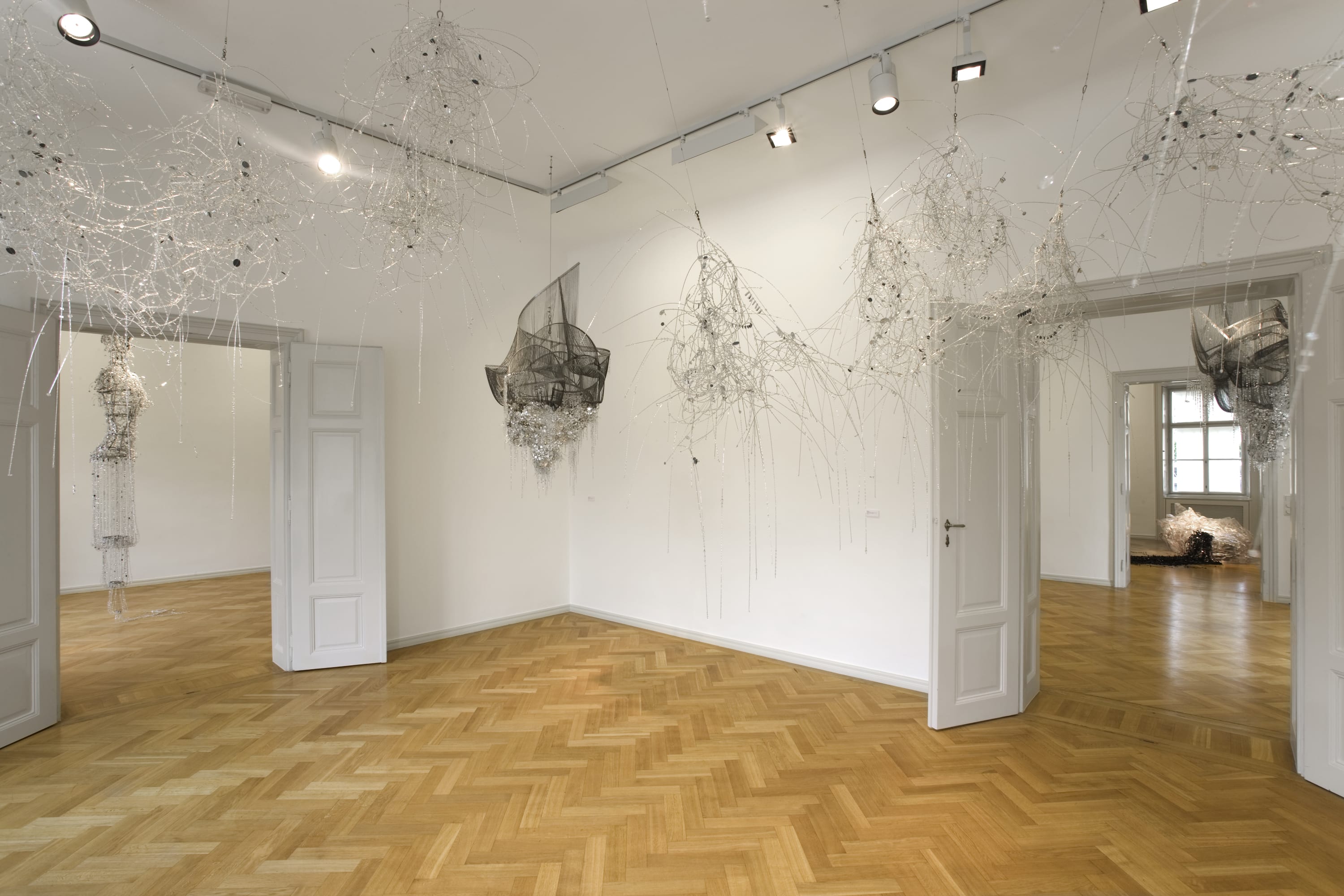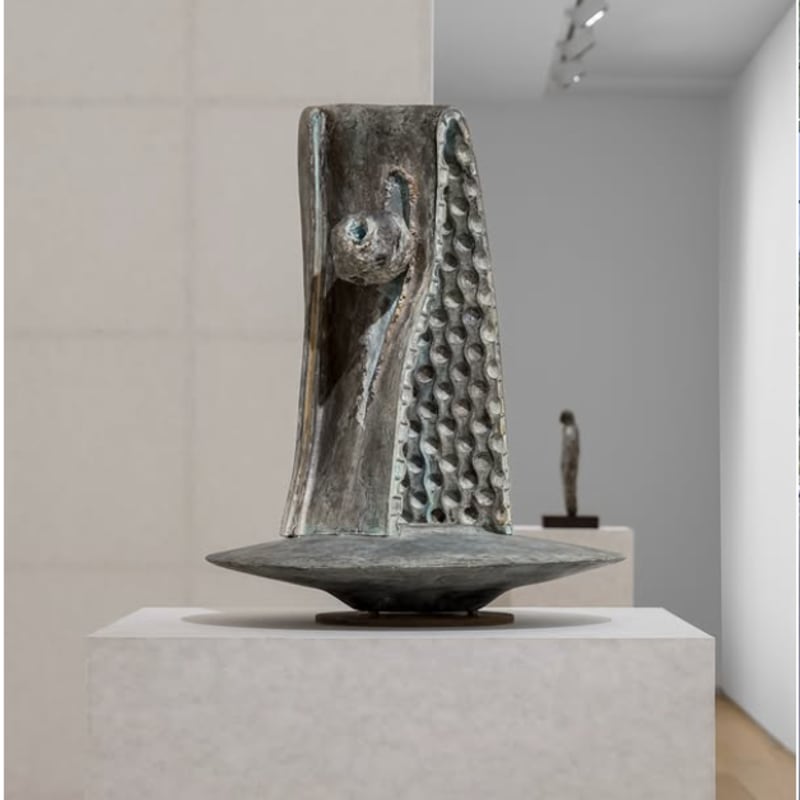

Lee Bul Lee Bul
Overview
On account of their iconography, her sculptures made of polyurethane and aluminium touched on the gender debate by pointing to the relation between the image of a woman and technological metaphors.
Lee Bul (born in 1964) is one of the best-known representatives of the young Korean art scene. The sculptor who lives in Seoul became known in the late nineteen-eighties by her daring performances in which she walked through downtown Tokyo and Seoul wearing monstrous full-body costumes that were equally grotesque and erotic. »A radical synaesthesia which by all means includes social nexus became manifest in these actions and was pushed to its limits in 1997 by the artist's installation Majestic Splendor at the Museum of Modern Art in New York« (Christine Kintisch). Majestic Splendor was made up of little plastic bags holding sequined fish, and their decay was part of the performative process. This installation triggered a scandal, but was still Bul's breakthrough as an internationally acknowledged artist. Harald Szeemann then invited her to the Biennial in Lyon. In 1999, she represented Korea at the Venice Biennale.
Over the past years, Lee Bul's motifs mainly centered on the world of cyborgs and monsters. On account of their iconography, her sculptures made of polyurethane and aluminium touched on the gender debate by pointing to the relation between the image of a woman and technological metaphors. The Salzburg exhibition brings new sculptures by Lee Bul together that have never been shown before. They pick up the threads of this complex of themes and yet break new ground. Thus, we will present not only Bul's biomorph plastic compositions, but also elaborate hybrids made of crystals, glass, acrylic, and metal which oscillate between landscapes and architecture. In this context, the architecture and architectural visions of Bruno Taut, who mainly became famous by the glass pavilion displayed at the Werkbundausstellung 1914 in Cologne, play an important role. In his large image cycles Alpine Architektur [Alpine Architecture] and Auflösung der Städte [Dissolution of the Cities], Taut designs the utopia of a fusion of architecture and nature. These visions are like historic models for Bul's surreal installations.
Around the turn of the millennium, Lee Bul became one of the most sought-after artists of our time. Thus, extensive solo exhibitions were held at the Kunsthalle Bern (1999), the BAWAG Foundation Vienna (2001), the San Francisco Art Institute (2001), Le Consortium Dijon (2002), the New Museum of Contemporary Art New York (2002), The Power Plant Toronto (2002), and the Museum of Contemporary Art Sydney (2004).
The exhibition presented at the Galerie Thaddaeus Ropac Salzburg will subsequently be shown at the Fondation Cartier in Paris.

















































































































































































